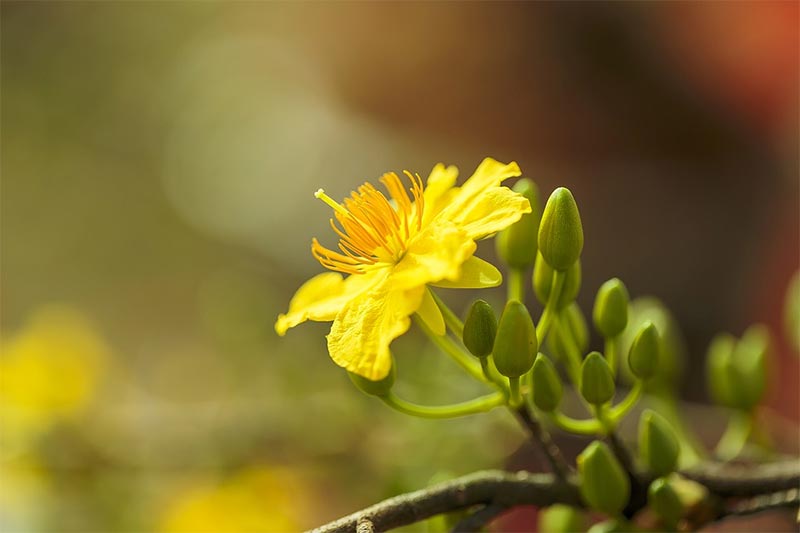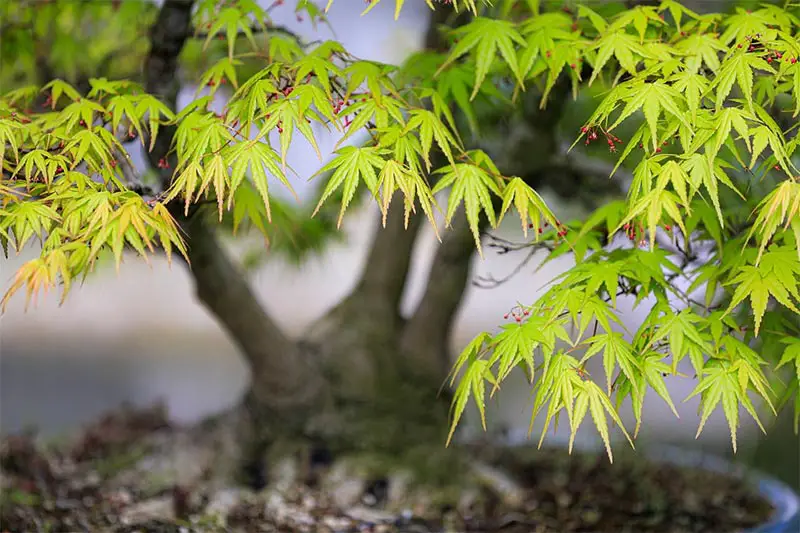Using Bonsai Tree Fertilizer Properly
Fertilizer is an essential part of the puzzle to growing a beautiful bonsai, regardless of the species. Proper usage during the growing season helps the plant thrive as it slowly drains the soil of all nutrients. This depletion of nutrients occurs due to the limited soil available within a bonsai pot, as the tree roots cannot stretch out and grow in search of nourishment.
Let’s take a quick look at using bonsai tree fertilizer properly.

Bonsai Fertilizer Types
There are two main fertilizer types that you can purchase, each offering different benefits. The choice will also depend on the type of bonsai tree you’re growing. For bonsai trees, there’s normally a special type of fertilizer you can purchase, which provides better nutrients for the plant.
Organic
Organic bonsai fertilizer contains plant or animal-based components. This option isn’t processed and releases the nutrients slowly, nurturing the bonsai as it grows slowly. It’s is less risky for your tree as it won’t burn the roots by overfertilizing them.
Inorganic
Inorganic bonsai fertilizer releases the three main components of Nitrogen, Potassium, and Phosphorus. While this option is fast and efficient, it can cause salt build-up in the soil. Reading the guidelines of the fertilizer package will help avoid any issues which can damage your bonsai tree.
Solid Vs. Liquid Fertilizer
Aside from organic and inorganic fertilizer, there are solid and liquid varieties. These options often affect how quickly the fertilizer is absorbed into the soil and nurtures your plant.
Solid
Solid fertilizers such as pellets or small blocks slowly release nutrients to your bonsai each time you water it. Holding these pieces in place with a mesh cup or other tool allows you to easily view how used up the product is.
Liquid
Liquid fertilizer is best used if you’re trying to cover the entire base of soil equally. However, before you use this product you need to check that the soil is wet. The moisture will help your tree absorb the nutrients.

What to Look for in Your Fertilizer
A good fertilizer will provide all the nutrients with your bonsai tree needs, such as Potassium, Phosphorus, and Nitrogen. The ratio for these components changes depending on your tree and the fertilizer you choose. Aside from these three main nutrients, there are other secondary ones that you’ll see listed on a product’s label.
Nitrogen
Nitrogen is responsible for the greenery of your tree. This element is the most important for your plant as it affects the leaves, a vital section of all trees and flowers. A healthy amount of nitrogen in your fertilizer
Phosphorus
Phosphorus helps maintain the roots of your bonsai and aids the growth when flowering or bearing fruit. This element also provides energy to your plant and helps it grow. Phosphorus can play a vital role during the winter season when trying to keep your bonsai alive in the cold weather.
Potassium
Potassium is great for the overall health of your bonsai tree. This element aids the disease resistance of your plant and encourages the sap flow needed for plant growth. Potassium can increase how much stress your tree can withstand as it grows.
How Often Should I Fertilize My Bonsai?
Fertilizing your bonsai as often as possible can potentially damage the roots. Knowing the correct frequency will help prevent any damage and result in a beautifully grown tree. While this differs slightly for different species of bonsai trees, there are some general rules that you can follow.
Most of the fertilizing period should take place between spring and autumn. The nutrients will aid the plants as they go through a slow-growing period in these months and plays a crucial role in their development. Most indoor bonsais will require fertilizer throughout the year.
However, fertilizing the trees will eventually become natural as you’ll learn when the plant requires extra nutrients through experience.
Deciduous Bonsai
During the growth season, these plants should receive fertilizer every fortnight. During the winter season, you can choose to leave the plant unfertilized or apply fertilizer once a month as long as its Nitrogen levels are low, preferably at 0%.
Tropical Bonsai
These bonsai trees should receive doses of fertilizer weekly. While they will take well to certain fertilizers in the winter months, the growth rate is much slower and will have a less noteworthy effect. If there seems to be little to no effect, switching to a three or four-week gap between fertilizing will ensure that the plant still gets nutrients during the colder season.
Coniferous Bonsai
Coniferous bonsai trees need fertilizer every week from spring to autumn. To reduce overuse of your fertilizer, only give the tree doses every month.

How to Fertilize a Bonsai Tree
Fertilizing a bonsai tree is a quick and easy process you can complete within minutes. For solid-state fertilizer, simply place it into a small mesh basket that hooks into the soil to prevent it from moving. Liquid fertilizer gets mixed into the water you use when watering your bonsai tree, spreading it evenly over the roots.
Avoid Over Fertilizing Your Bonsai
Fertilizing your bonsai trees is an essential part of helping them grow. However, once you begin to overdo this and drown them in nutrients, it’s easy for the plant to wither. Take care to use the correct type of fertilizer and monitor how often you give it to your bonsai for a healthy tree.
We have a detailed bonsai tree care guide with all the relevant information. Check the guide out here!








